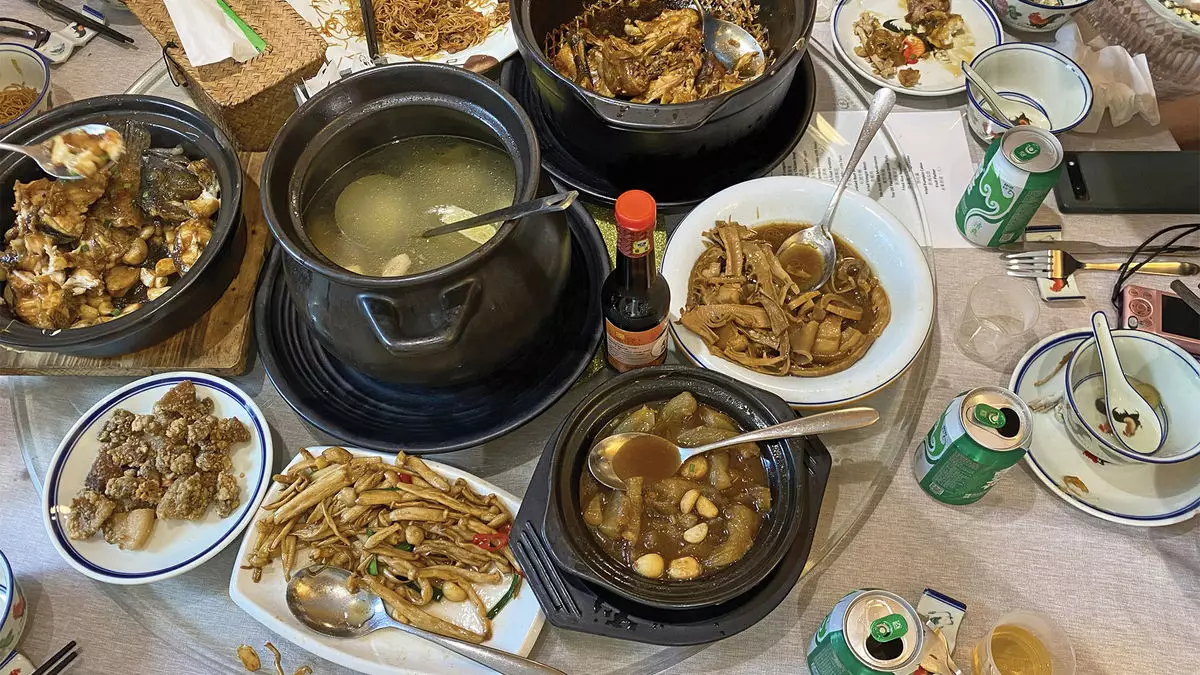After two decades of cherishing mornings with a warm cup of green tea, I found myself pondering the deeper narrative behind this beloved beverage. My epiphany came during a recent cruise aboard the Viking Yi Dun, which focused on exploring China’s exotic coastal landscapes while immersing in its rich traditions. It was an enticing opportunity that transformed a simple pastime into an enlightening experience about the history of tea in China, especially Tieguanyin, a famous type of oolong tea.
Embarking on this voyage allowed me to delve into the age-old traditions of tea cultivation and consumption, a practice that dates back thousands of years in China. Tieguanyin, specifically, holds significant cultural value. It is renowned not only for its unique flavor profile—an engaging dance between the characteristics of green and black teas due to its variable oxidation—but for its legacy rooted in the Fujian province. During our trip, we had the chance to visit Xiamen, the heartland of Tieguanyin, where the landscape itself narrates the ancient history of tea cultivation.
Upon arriving in Fujian, my senses were awakened by the sight and smell of expansive tea terraces, reminiscent of vineyards, gracefully enveloping the hills. This picturesque environment is not only lush; it embodies the autochthonous spirit of local agriculture. With anecdotes from an English-speaking guide, I learned about the intricacies involved in the foraging process of Tieguanyin. The region’s distinct climate and terrain contribute to creating a flavor that aficionados recognize as both refreshing and complex, making it a prized possession in tea circles worldwide.
Our journey further introduced us to the regional cuisine that complements this delightful beverage. A family-style lunch was prepared for us, showcasing local dishes infused with tea. This meal featured delicacies such as the tea-scented longdan fish, hearty braised brisket, and a uniquely presented rooster. Each bite felt like an homage to the culture surrounding Tieguanyin. The interplay of flavors captured the essence of the region, reinforcing how food and beverage can weave a narrative together, enhancing the overall experience.
As we transitioned to the tea picking activity, adorned with bamboo hats and laden with excitement, I realized that the heart of this excursion lay within the hands-on experiences we were about to encounter. Engaging directly with the process of tea foraging allowed me to appreciate not just the final product, but the labor and care invested into each cup of tea. Guided by an expert, we learned the delicate art of selecting the perfect trio of leaves, comprising two mature leaves flanking a tender young sprout. Each pluck felt oddly rewarding, creating a palpable connection to the natural world and its intrinsic flavors.
Once the initial thrill of picking tea subsided, the unpredictable weather shifted our activities indoors. Seeking refuge from increasingly persistent rain, we gathered in a welcoming shelter where further insights into the tea processing methods awaited us. Through practical demonstrations, the transformation of freshly picked leaves into the beloved Tieguanyin tea was unveiled. The priming stage involved drying the leaves, often expedited by tossing them into suspended baskets. Observing this age-old practice illuminated the diligence necessary to craft quality tea.
Undoubtedly, the craft continues with the frying and rolling processes, each step precisely executed to achieve the desired taste and aroma. It was illuminating to witness how the intricate method of production manifests the flavors that we ultimately enjoy in our cups.
Concluding this enlightening journey, we returned to the tearoom, ready to partake in yet another tea ceremony rooted in tradition. With genuine enthusiasm, we reveled in sampling various types of Tieguanyin, both caffeinated and decaffeinated. Sharing in this cultural ritual with fellow travelers enriched our sense of belonging and appreciation for what had become more than just a beverage, but a symbol of connection—to one another, to our host culture, and to our personal journeys.
As I prepared to leave, I couldn’t help but purchase some exceptional Tieguanyin for myself and carefully selected packets for friends and family. This journey served as a reminder that tea is not merely a drink; it is a culturally rich experience that connects us through time and place. The next time I sip my morning tea, I will cherish not only its flavor but also the vibrant tapestry of history, culture, and connection that helped bring it from farm to cup.


Leave a Reply